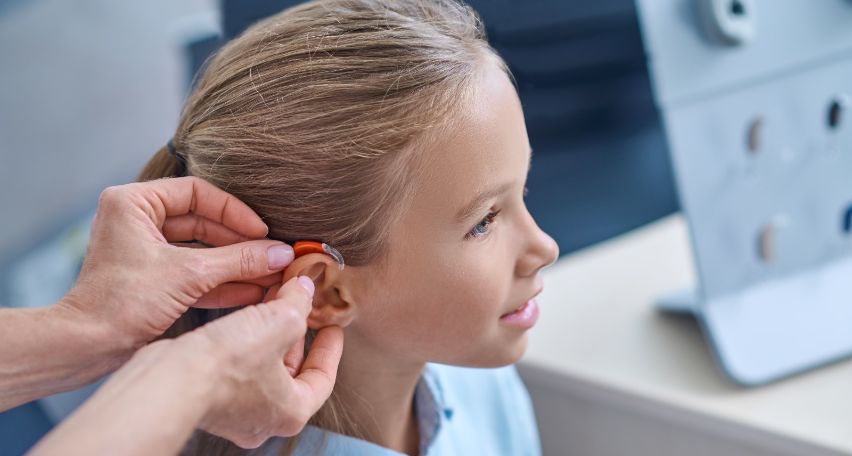When should I update my hearing aids?
We begin to wear hearing aids when we notice symptoms like people mumbling or difficulty understanding conversations on the phone or we find it difficult to understand conversations when people are not looking at us. But, these tiny instruments which help us to go about our everyday activities with ease do not last forever. They have a stipulated lifespan and so does our hearing ability. Therefore, there is a dire need for us to know or determine how long these tiny instruments can be used.
Intricate kinds of devices
Hearing aids are minute devices and are of different kinds. Their size and how they are placed in our body, and the degree of amplification of sound differs according to the needs of the patient. One type of hearing aid is made to fit inside the ear and another outside the ear. The Behind-the-ear hearing aid suits people of all age groups and from mild to intense hearing loss. As they are less damaged by earwax, it suits people who experience wax build-up in the ears. The In-the-ear aids fit snugly inside the ears and is not suitable for children. The canal aids are made to suit the ear size and are small and inconspicuous. But, patients find it difficult to remove and insert it.
Factors that lead to updating
Having made a choice about the kind of hearing aid we want to use, it is very important that we maintain the devices with good care. Generally, these handy and trendy devices are said to last for a decade but most of them lose their efficiency in half the time. Let us now discuss some of the factors that will help you realize that it is time to change your hearing aids.
Batteries: Manufactured using light materials, the hearing aids make use of batteries, some of which are rechargeable. They are mostly lithium batteries that last for 4-5 years. The more the device is used, the less the lifespan of the battery. You will know that your battery is dying down when it begins to drain faster than usual. In such a case you need to talk to the manufacturer about the change of batteries. At times, you might have to change the hearing aid itself. This depends on how you have used or maintained the device.
Storage: The life expectancy can come down and you need to change the hearing aid if you do not store these petit devices the way they must be. For instance, hearing aids that make use of disposable batteries should always be stored with their battery door open. To help them dry and last longer, you can also use a case with a dehumidifier. Your hearing practitioner will guide you regarding the kind of dehumidifier that works best for your hearing aid.
Human body limitation: Not all human bodies are made the same way. Some sweat a lot, some produce a lot of earwax, and all these impacts the hearing aid. Parts of the hearing aid might degrade or it might lose color and it might also affect the metal component of the device. In such cases, the hearing aid does not last long and we need to change the device.
Age: Our age has an impact on the devices we use. Also, as technology keeps changing, we need to update the machines we use. This is a must especially if they are as personal as the hearing aid. Our hearing worsens as we grow older. Therefore the machine has its limitations and needs to be changed to increase the audibility range according to the person’s needs.
Factors that impact hearing aids
When you go in for a new hearing aid, you must make it a point to ask the hearing practitioner how long it will last. Though they have a predetermined lifespan, there are factors that impact hearing aids.
- Materials of the hearing aids
- How well and how often the hearing aids are cleaned
- Where and how they are worn and stored
- Depends on the level of maintenance
You should change your hearing aid if the material (plastic, silicon, and polymer) of the device begins to degrade. Hearing aids are constantly exposed to external factors such as dust, earwax, temperatures, sweat, sunlight, and skin oils. They have to be cleaned periodically. If need be, worn-out parts should be replaced. Otherwise, they begin to give way.
Obsolescence
For people who have been using hearing aids for a long time, obsolescence can be a problem. We need to update the products every now and then because manufacturers stop making a particular part for a particular brand. There may be changes in software and therefore reprogramming will not be possible. In such cases, there arises a dire need to change your hearing aids.
The hearing impaired might want to change his preference for the hearing aid. He might want to buy one with more features and buy one that would suit him better and if need be with a device with higher frequencies too.
Advancements in digital technology have been made in the hearing aid industry also. The devices manufactured now come with a slew of new and extraordinary features to treat different kinds of hearing loss. Understanding your hearing aids, maintaining them, and updating them whenever you feel there is a need, is a way of ensuring your hearing optimally for better communication




